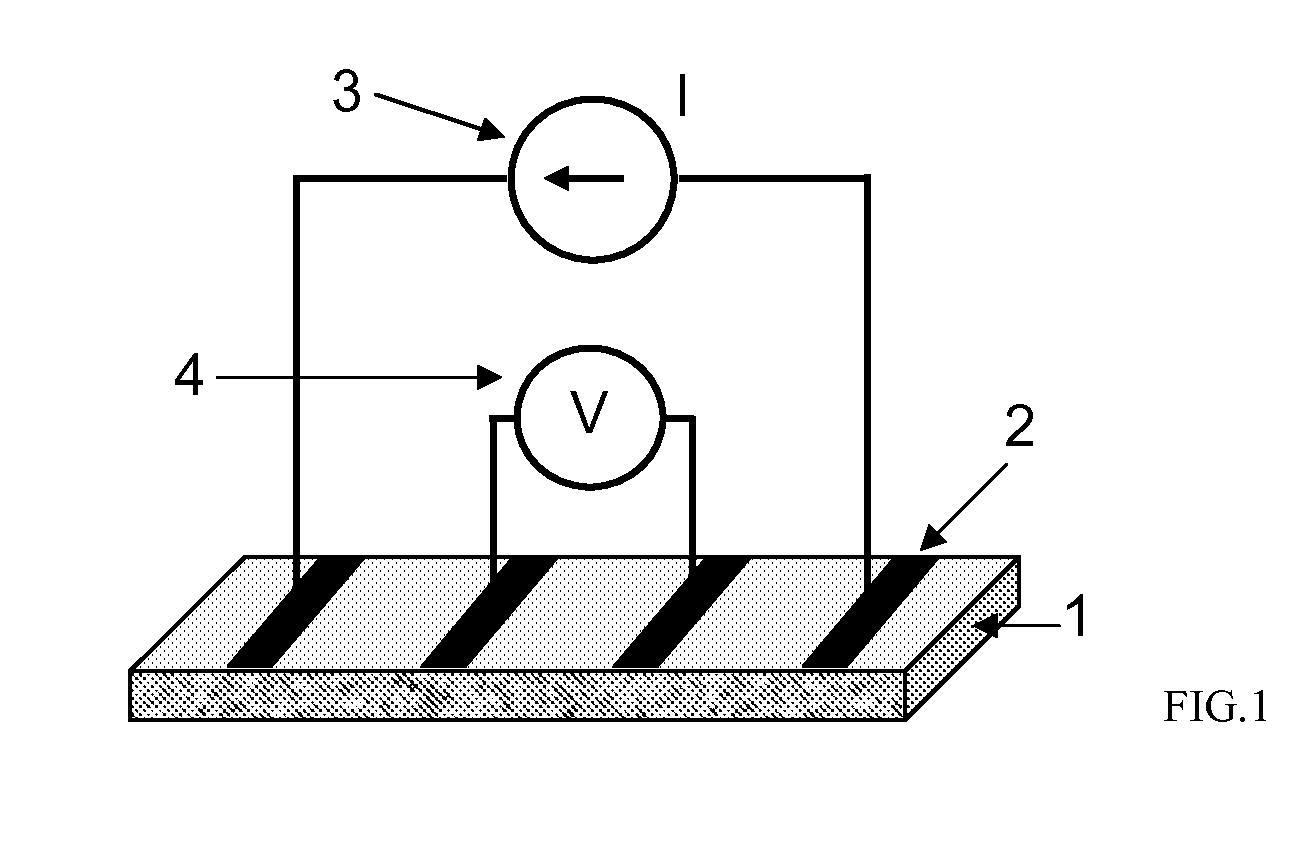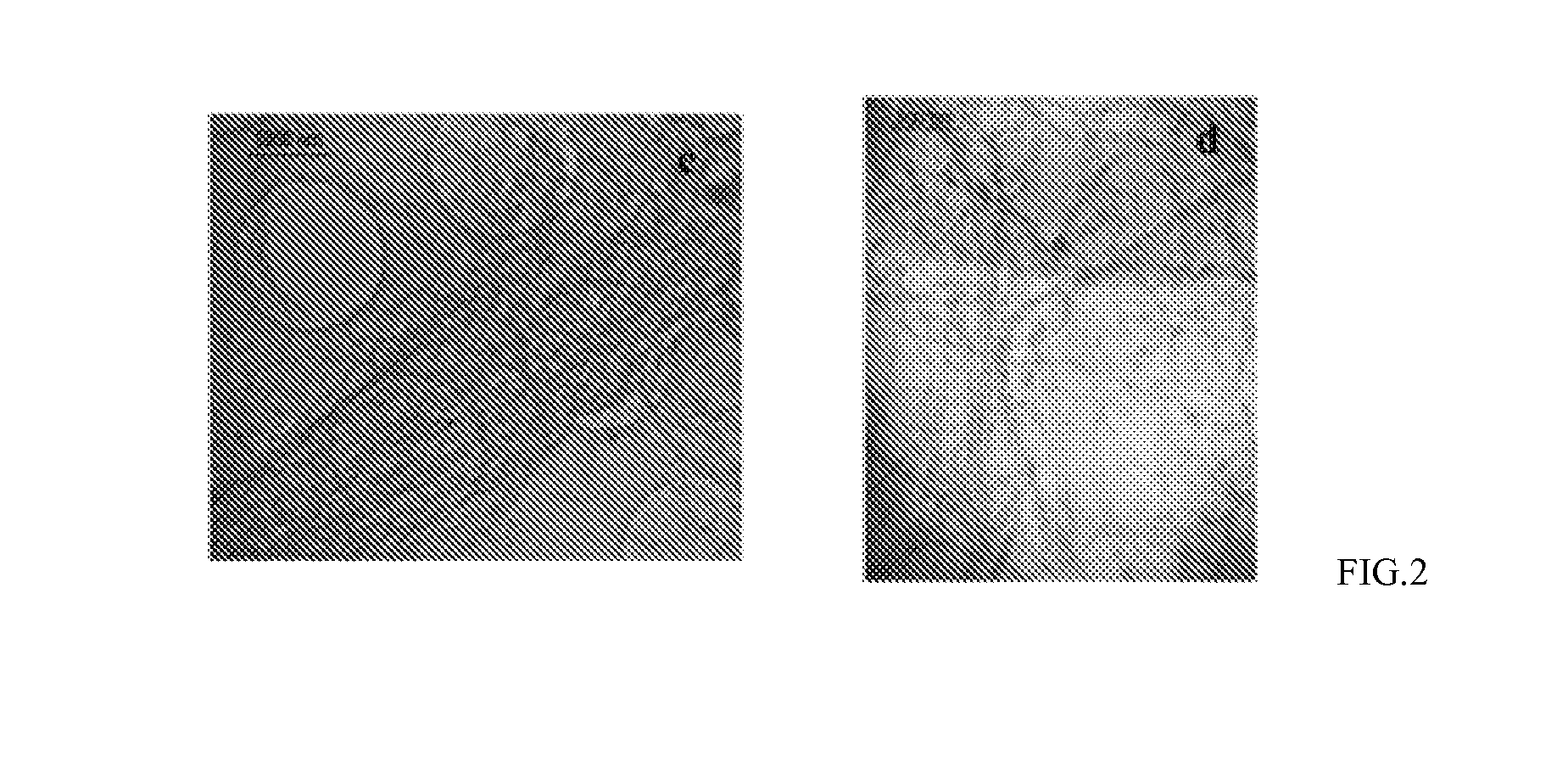Freestanding carbon nanotube networks based temperature sensor
a carbon nanotube and temperature sensor technology, applied in nanotechnology, photovoltaics, electrical/magnetic means, etc., can solve the problems of reduced scalability, non-negligent power consumption, and high cost, and achieve the effect of reducing the possibility of disturbing the neighbouring environment and easy shrinkag
- Summary
- Abstract
- Description
- Claims
- Application Information
AI Technical Summary
Benefits of technology
Problems solved by technology
Method used
Image
Examples
example 1
High Carbon Conversion Synthesis of MWCNT
[0054]The experimental plant for CNT syntheses consists of three sections: feed section, reaction section, analysis section. All the gas pipes (¼″ De) are of Teflon, connections and two, three and four way valves in stainless steel, to avoid any corrosion due to the presence of water in the reaction products.
[0055]The feed section allows the feeding with one or more hydrocarbons as source and uses N2 as carrier gas. For each gas a mass flow controller is used, in order to assure a constant flow rate. The reaction section allows the preparation of carbon nanotubes in a reactor, consisting of a quartz tube of 300 mm length and 16 mm internal diameter. A quartz reactor, placed in a vertical furnace, is filled with a thin layer of catalyst particles that is crossed perpendicularly by the gaseous feed. An external quartz tube, internal diameter 35 mm, permitted the preheating of the reactants stream. In order to measure the temperature inside the ...
example 2
MWCNT Films Fabrication and Their Characterisation
[0061]To remove catalyst impurities, the grown MWCNTs are treated with 46% HF aqueous solution; a solid residue is afterwards extracted and washed with distilled water, then centrifuged and finally dried at 353 K for 12 h.
[0062]The final product is an sample of high purity MWCNTs, with a length in the range 100-200 μm and internal and external diameter of 10-30 nm and 5-10 nm, respectively (a TEM image of the MWCNTs is shown in FIG. 2).
[0063]The MWCNTs are used to fabricate random networks (MWCNTNs) in the form of thin films, with a fabrication procedure described below (FIG. 4):
[0064]9. 0.5 g of MWCNTs are suspended in 100 g of water in presence of 0.1 mg of sodium dodecyl sulfate and sonicated for 15 min
[0065]10. the solution is then vacuum filtered onto a membrane support
[0066]11. after drying, MWCNT films of different thicknesses and densities are removed from the support.
[0067]The described MWCNTN preparation procedure does not ...
example 3
Manufacturing of CNT T-sensor
[0068]The so-obtained MWCNTNs (FIG. 5), typically with thickness of 100-300 um and diameter of 1-4 cm, can be folded and cut and are sufficiently robust to let stable contacts (by metal evaporation or, in a simplified embodiment, silver paint) to be formed and to withstand sudden and long thermal stresses. 4 metallic pads (contacts) are created with electrically conductive Ag paste, on samples of dimensions 2×6 mm2 of MWCNTN, with thickness in the range 200-300 m to allow a precise measurement of the conductance. Due to the metallic nature of MWCNTs, the nanotube networks can be highly conductive and a 4-probe method is necessary to accurately measure their resistance, by overcoming the problem of a comparatively non-negligible contact resistance (FIG. 6).
PUM
 Login to View More
Login to View More Abstract
Description
Claims
Application Information
 Login to View More
Login to View More - R&D
- Intellectual Property
- Life Sciences
- Materials
- Tech Scout
- Unparalleled Data Quality
- Higher Quality Content
- 60% Fewer Hallucinations
Browse by: Latest US Patents, China's latest patents, Technical Efficacy Thesaurus, Application Domain, Technology Topic, Popular Technical Reports.
© 2025 PatSnap. All rights reserved.Legal|Privacy policy|Modern Slavery Act Transparency Statement|Sitemap|About US| Contact US: help@patsnap.com



